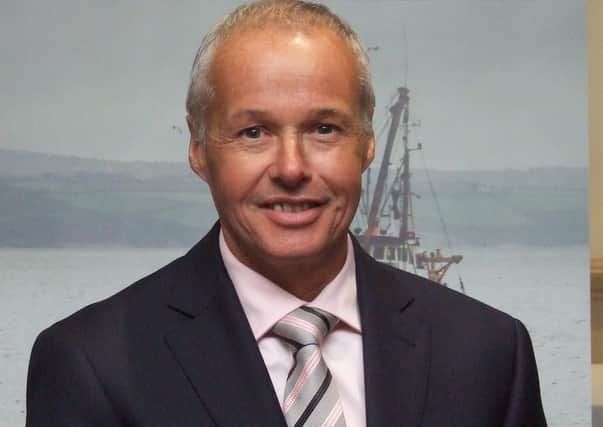Large pelagic fishing boats tick the sustainability boxes – Ian Gatt


While Scotland’s fishing fleet and sea fisheries are of significant importance to our rural and coastal communities, on the overall national scale, the contribution at first glance might not seem nearly as significant, at around 0.2 per cent of the overall Scottish economy.
In the catching sector, direct employment is around 4,800 people and for processing it is in the region of 8,900 Full Time Equivalent (FTE) jobs. However, that is in many ways an over-simplification because of the ‘multiplier effect’ of other jobs the fishing and seafood processing industry supports.
Advertisement
Hide AdAdvertisement
Hide AdA report by Seafish (the public body that supports the UK seafood industry) – entitled ‘The economic impacts of the UK sea fishing and fish processing sectors: An input-output analysis’ – highlights just how important this effect is. Take the pelagic (mackerel and herring) sector as an example. According to the Seafish report, it is estimated that one employee in the pelagic catching sector supports 5.6 jobs in the wider UK economy and 1 employee in pelagic processing sector supports 5.9 jobs in wider UK economy. When you consider that the pelagic fleet employs around 300 fishermen, and pelagic processing sector about 2,000 employees, then the figures really begin to stack-up.
On closer analysis, it is easy to see why. Sustainably caught mackerel and herring is a premium product, and to ensure Scotland can compete in the global marketplace, it is essential that our fishing fleet is equipped with the most modern and sophisticated fish-cooling and handling technologies. Such equipment needs a lot of maintenance and servicing – and that means jobs.
Similarly, our large pelagic vessels need a vast range of other servicing and maintenance work, including for electronics, engines, paint-work, nets, ropes and wire, fuel supply – the list just goes on and on. The same applies to processing – filleting machinery needs maintenance, packaging is required, forklifts have to be looked after, freezing machinery requires frequent servicing, and then there is the logistics and transport required in getting the end-product to the market.
It is an important point to make, because while there are some small mackerel hand-liner craft, our sector often comes under criticism from environmentalists because the overwhelming bulk of the pelagic fleet comprises of 24 large boats; and when it comes to fishing, these groups have the misapprehension that large is bad.
Yet, our herring and mackerel fisheries are among the most sustainable around. The pelagic fishery is very carefully regulated and strictly controlled, with scientific stock advice used for the setting of catch levels. Furthermore, these large vessels in our pelagic fleet work a clean midwater fishery where there is virtually no by-catch of unwanted fish. Our mackerel sector alone is worth hundreds of millions of pounds to the Scottish economy each year.
It is also important to remember that mackerel and herring shoals are mostly located in deep water many miles from the coast where it would be too dangerous for small craft to venture. In the case of mackerel, much of the fishing takes place in the winter where only large vessels could ever safely venture.
But our environmental credentials go even further when compared to other methods of protein production. A study by the NAFC Marine Centre in Shetland found that the carbon footprint of the Shetland mackerel trawl fishery is significantly lower compared to land-based food production for meat products such as beef, pork, lamb, and chicken. Mackerel (and herring) is also a delicious and relatively cheap food product for the consumer to purchase.
Scotland’s pelagic fishery helps protect our own national food security and provides an affordable and nutritious foodstuff for developing countries around the world. This is especially important, given UN Food & Agricultural Organisation predictions on future global population growth. A fair proportion of our pelagic catch, for example, is already exported to such markets, including in West Africa.
Advertisement
Hide AdAdvertisement
Hide AdIndeed, Scottish seafood – whether it be whitefish, shellfish or pelagic – is renowned around the world for its excellent quality. And, to maintain both the home and export markets, the current make-up of the Scottish fleet, which comprises a mix of both small and large vessels, provides the perfect structure.
In Scotland, we are lucky to have such a rich and broad range of fisheries, which are harvested by small creelers and hand-liners, right up to our large pelagic vessels. It is an eclectic mix which we should cherish – with each one playing an important role in putting food on our plates.
Ian Gatt, chairman of the Scottish Pelagic Sustainability Group
Comments
Want to join the conversation? Please or to comment on this article.